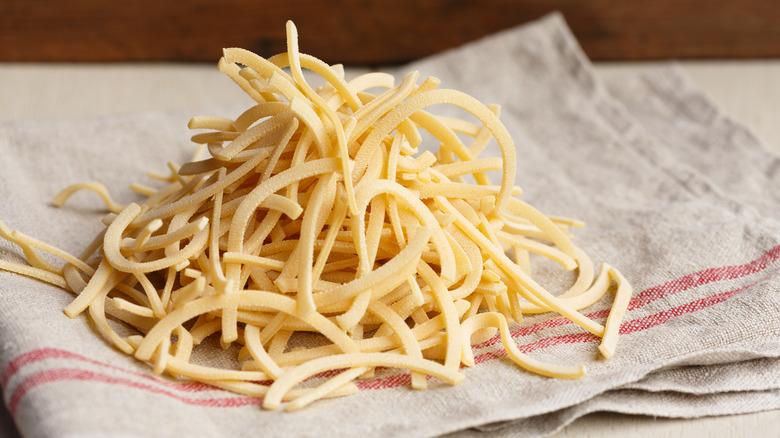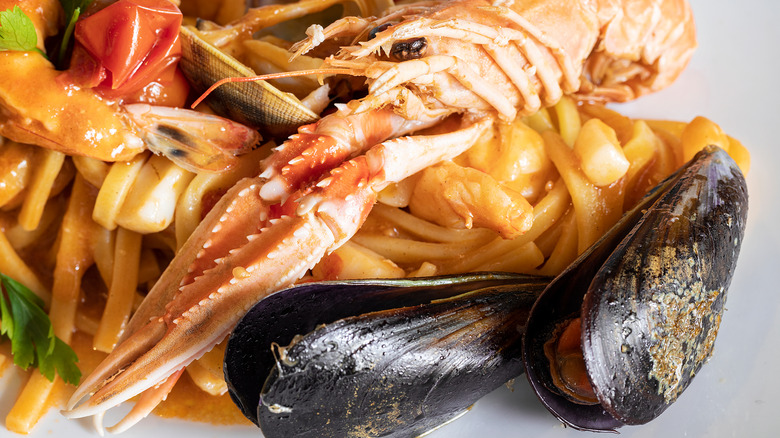Here's How Scialatielli Pasta Is Usually Served
Oh, the wide, wonderful world of pasta. Although the recipe for traditional, Italian dried pasta is as simple as can be — containing only semolina flour and water — when it comes to shapes, pasta is anything but simple. Dried pasta comes in a staggering array of forms — there are approximately 350 kinds, ranging from easily identifiable spaghetti and ziti to less common, highly regional shapes such as hollow-centered bucatini, and short, twisty casarecce. If you like your pasta varied in shape, you could spend a lifetime trying all the different kinds.
We like to think we're experienced pasta-eaters, having dabbled in everything from tortellini to orecchiette to gnocchi and more. But there's one shape that we learned about recently that we haven't tried — scialatielli. It sounds so good that we wanted to share. So read on to discover what type of pasta this is, and how it's traditionally served.
Scialatielli, a newish pasta on the scene
According to The Pasta Project, scialatielli is a fairly recent invention. The pasta, which is thin and flat in the style of tagliatelle but cut a bit shorter, was created in the 1970s by Enrico Cosentino, a chef from the Amalfi coast. Cosentino crafted his dough with milk as well as fresh basil, extra-virgin olive oil, and Parmesan cheese.
If you want to make scialatielli at home, you're in luck. There's an array of recipes to choose from that often involved mixing together the dough, rolling it out, and then cutting it by hand. But if you want to take a shortcut, dried scialatielli is also available from specialty pasta brands that you can order online. Dried scialatielli doesn't contain milk, basil, or cheese, which wouldn't be shelf stable, but it does have the same shape as the fresh variety.
If you make scialatielli or purchase a dried version, you can serve it in a number of ways. One of the simplest, is to toss it with pesto. If you want to ball out, you can whip up scialatielli all'amalfitana, a seafood dish that includes critters native to the Amalfi coast, such as clams, mussels, shrimp, and cuttlefish. If you try it, let us know how it goes.

